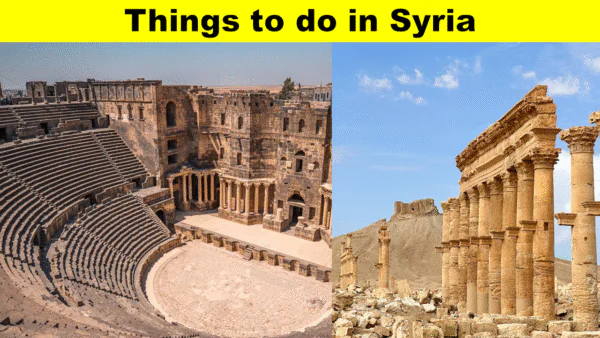Things to do in Syria: Based on NeemTime research from most popular to just popular.
Hermon Stream Nature Reserve, Syria
Overview: Hermon Stream Nature Reserve, also known as Banias Nature Reserve, is a lush, mountainous area featuring a scenic stream, waterfalls, archaeological ruins, and dense vegetation in the Golan Heights region.
History: The area is historically significant as it hosted the ancient city of Banias, a sacred site to the Greek god Pan, and later a strategic location during various empires.
Since When: It was declared a nature reserve in the 1970s under Israeli administration following the 1967 Six-Day War, though its historical relevance dates back to ancient Hellenistic times.
Review: Visitors praise the mix of natural beauty and archaeological depth, offering a peaceful retreat and educational experience.
When to Go: The best time to visit is between March and May or September and November, when temperatures are mild and foliage is at its peak.
How to Go: It can be reached by car from nearby towns like Majdal Shams, with well-marked paths and parking areas near the entrance.
What to Do: Hike scenic trails, explore ancient ruins, enjoy panoramic views, and relax near the waterfalls.
Free or Paid: Entry is paid, with tickets required at the visitor entrance.
Nimrod Fortress National Park, Syria
Overview: Nimrod Fortress National Park is a dramatic mountaintop fortress offering panoramic views, impressive medieval military architecture, and exploration of centuries-old towers and passageways.
History: Built by the Ayyubids in the 13th century to defend against Crusader attacks, it was expanded by Mamluks and used by various Islamic dynasties.
Since When: The fortress dates back to around 1229 CE, with national park status granted in the late 20th century for preservation and tourism.
Review: Tourists and history buffs appreciate its majestic location, well-preserved structure, and lesser crowds compared to other major attractions.
When to Go: Best visited during spring and autumn to avoid harsh temperatures and enjoy clear views from the heights.
How to Go: It is accessible by car via routes from Mas’ade or Majdal Shams, with signage leading to the site.
What to Do: Explore the towers, underground passages, and admire views of the Golan and Mount Hermon.
Free or Paid: Entry is paid, with affordable ticket prices at the gate.
Al-Hamidiyeh Souq, Syria
Overview: Al-Hamidiyeh Souq in Damascus is a bustling historical market known for its long vaulted corridor, traditional crafts, spices, textiles, and sweets.
History: Commissioned in the late 19th century under Ottoman rule, it became one of the largest and most famous traditional markets in the Middle East.
Since When: The souq has been operating since 1863 and remains a cultural and commercial heart of Old Damascus.
Review: Visitors admire the authentic atmosphere, variety of goods, and friendly haggling, though crowds and occasional closures due to instability can be a concern.
When to Go: Visit during weekday mornings to avoid crowds and enjoy a more relaxed shopping experience.
How to Go: Located next to the Umayyad Mosque in central Damascus, it’s easily reached on foot from nearby landmarks or by taxi.
What to Do: Shop for souvenirs, taste local sweets like ice cream at Bakdash, and soak in centuries of culture.
Free or Paid: Entry is free, though purchases and guided tours may incur costs.
Aleppo Citadel, Syria
Overview: The Aleppo Citadel is an iconic medieval fortress that dominates the city skyline with its massive stone walls and centuries of layered history.
History: Occupied since at least the 3rd millennium BCE, it was fortified and expanded by Greeks, Romans, Byzantines, and various Islamic rulers, becoming a key defensive stronghold.
Since When: The current structure largely dates from the Ayyubid period in the 12th–13th centuries, though the site itself has been used continuously for millennia.
Review: Despite damage during recent conflicts, the citadel remains a powerful symbol of Aleppo’s historical and architectural significance.
When to Go: Best visited in spring or fall when weather is moderate and restoration work is less disruptive.
How to Go: Located in the center of Aleppo, it is accessible by foot, taxi, or local transport depending on infrastructure status.
What to Do: Explore ancient halls, towers, mosques, and panoramic views over Aleppo’s old city.
Free or Paid: Entry is typically paid, but may vary depending on current political and security conditions.
